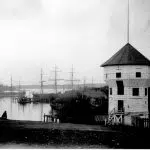
First Nations Health Authority tailoring its messaging about COVID-19
VANCOUVER — The public health communication about COVID-19 that’s aimed at Indigenous communities should be tailored and take into account Indigenous experiences, say a health official and a researcher who work with First Nation and Metis communities.
The pandemic has spurred announcements about infectious disease and illness, social distancing and isolation as officials ask the public to help “flatten the curve” to spare the health-care system from becoming overwhelmed.
Such language can cause anxiety for elders who endured Canada’s residential school system or so-called Indian hospitals, says Dr. Shannon McDonald, deputy chief medical officer with the First Nations Health Authority in B.C.
The health authority has avoided the word quarantine and used less formal language, such as asking people to “try to stay home” and “make sure you are an arm’s length or two away” from other people, she said.


